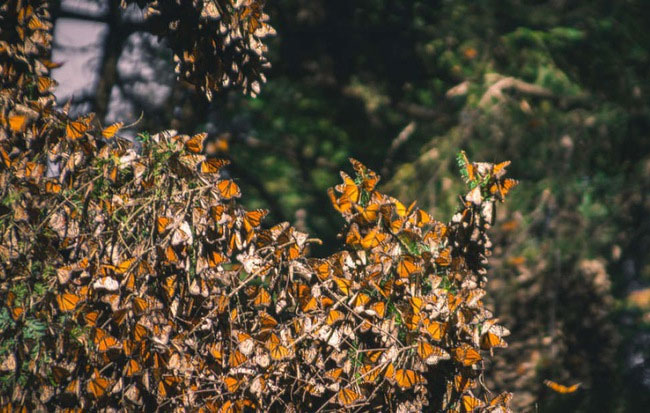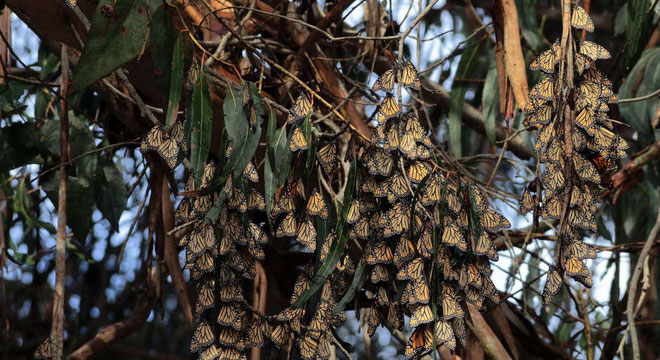In the past year, thousands of butterflies have evaporated, but scientists do not know why
The butterfly count aims to help scientists of the WMTC volunteer group (Western Monarch Thanksgiving Count) take place. Only thing, the butterflies did not appear.
In recent years, every November, many people in California state gather to . count butterflies. They are volunteers of WMTC (Western Monarch Thanksgiving Count) - a community science project, to help scientists investigate North America's famous monarch population.
This year too, volunteers continue their tradition as every year. Just bothered, the butterflies didn't appear.

Western monarch butterflies.
In spring and summer, the Western mornarch butterfly will spread out across the states on the East Coast: Washington, Idaho, Nevada, Utah . and then gather in California to stay afloat. when winter comes. WMTC volunteers will count the number of butterflies at 97 locations. As of 2017, they counted a total of about 148,000 individual butterflies.
In 2018, the number is only 20,000, down to 86%.
Still know that the number of butterflies is decreasing, and based on that trend, experts have estimated the number of butterflies that should appear this year. But no, the number is less than an estimated 30,000 individuals, and this indicates that the butterfly is in an extremely critical situation.
Experts have not been able to explain why the number of butterflies has fallen so quickly. However, the initial clue is that this phenomenon occurred in the late winter 2017 - early spring 2018, when mature butterflies entered the final stages of life making them more vulnerable.

Unusual climatic phenomena during the year may also be the cause of the decline of monarch butterflies.
Unusual climatic phenomena during the year may also be the cause, such as the fierce storms in California at the end of this summer, and the recent flare-up of seismic wildfire. That is not to mention the prolonged drought in many areas and the supply air quality is declining.
According to research published in the journal Biological Conservation in 2017, the number of Western monarchs in North America tends to fall sharply than ever. Over the past 20 years, the number has decreased by 72%. Considering the half-century period, it's 86%.
According to the study, in the 1980s, about 10 million monarchs dwelled in California. But in 1997 and 1998, science witnessed a sudden decline in the number of butterflies.
"Research shows that the number of butterflies is now less than ever in the last 35 years. If this trend continues, in the future, they may no longer exist" - quoted Chery Schultz , the author studied.
According to experts, if not early implementation of conservation work, the future of monarch butterfly will be extremely bleak.
- Beautiful butterflies
- Close up of mysterious transparent butterflies
- Butterfly's wicked secret
- Butterflies are beautiful like fairytale in Mexico
- Forest princess butterflies rarely see thousands of children in Sapa
- Giant butterflies appear much in Soc Trang
- Fluttering because of dozens of butterflies
- The point of incredible facts about green butterflies
- Discovered butterflies drink bird tears
- Interesting facts that few people know about butterflies
- Learn the terrible eating habits of butterflies
- Beautiful wings of butterflies
 Why do potatoes have eyes?
Why do potatoes have eyes? 'Tragedy' the world's largest carnivorous life: Death becomes ... public toilet
'Tragedy' the world's largest carnivorous life: Death becomes ... public toilet Tomatoes were once considered 'poisonous' for 200 years
Tomatoes were once considered 'poisonous' for 200 years Detecting microscopic parasites on human face
Detecting microscopic parasites on human face